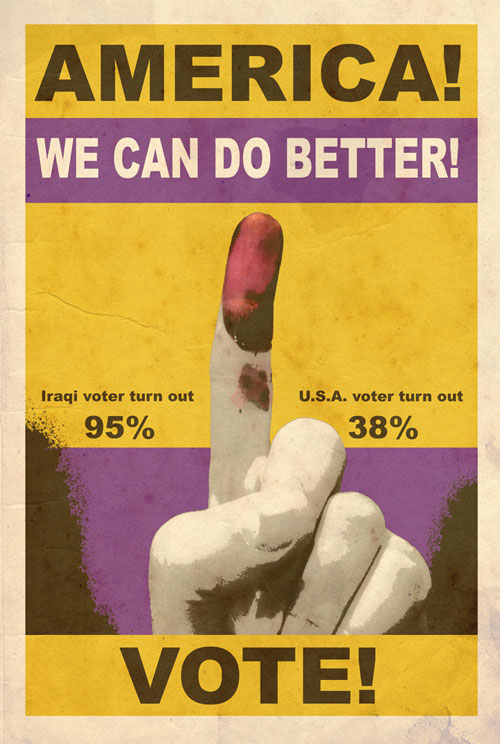The amnesty-for-illegals crowd has found some sympathetic poster children.
Harry Reid and Nancy Pelosi have pledged a vote as early as this week on the DREAM Act (Development, Relief and Education for Alien Minors), a bill that would legalize illegal aliens who arrived here before the age of 16 and who comply with certain educational or military-service requirements.
The core principle behind this amnesty proposal is that it is aimed at those who have grown up here and are, psychologically and emotionally, Americans. In the words of America’s Voice, a hard-left open-borders group, the beneficiaries of the measure are “patriotic young Americans in all but paperwork.”
There’s no doubt that this is the most sympathetic group of illegal immigrants. That is precisely why DREAM has been dangled as bait for the more general amnesty proposals described as “comprehensive immigration reform,” with amnesty advocates brandishing the situation of these young people as justification for a broader amnesty. (Though no one seems to have stopped to ask: If such a comprehensive bill would provide amnesty for all illegals, then why would we need DREAM?)
Nonetheless, now that the amnesty crowd has belatedly decided to move ahead on DREAM as a standalone measure, many in the public and Congress are open to the idea of addressing the situation of such young people. But the DREAM Act, in every one of its iterations over the years, has four fatal flaws.
1. The act is billed as legalizing those brought as infants or toddlers, and yet it covers people brought here up to age 16. The examples used by advocates are nearly always people who were brought here very young. The student-body president at Fresno State University, Pedro Ramirez — who was “coincidentally” revealed to be an illegal alien just as the DREAM Act lame-duck effort got under way — came here at age three. Harvard student Eric Balderas was brought here at age four. Yves Gomes was brought here at 14 months, Juan Gomez at two years, Marie Gonzalez at five, Dan-el Padilla at four, and so on.
So why set the age cutoff at 16? If the point is to provide amnesty to those whose identity was formed here, then you’d need a much lower age cutoff. I have a 15-year-old, and if I took him to live illegally in Mexico (and living illegally is a lot harder to do there than here), he would always remain, psychologically, an American, because his identity is already formed. The Roman Catholic Church and English common law set the age of reason at seven. That, combined with a requirement of at least ten years’ continuous residence here, seems like a much more defensible place to draw the line. Unless, of course, you’re just using those who came as young children to bootstrap a larger amnesty.
2. Next, all amnesties have at least three harmful consequences, and the DREAM Act ignores all three. The first of these is massive fraud. Perhaps one-fourth of those legalized under the 1986 Immigration Reform and Control Act received amnesty fraudulently, including Mahmud Abouhalima, a leader of the first World Trade Center attack. The fraud in that first big amnesty program was so pervasive as to be almost comical, with people claiming work histories here that included picking watermelons from trees and digging cherries out of the ground.
And yet what does the DREAM Act say about fraud? As Sen. Jeff Sessions (R., Ala.) points out in “Ten Things You Need To Know about S-3827, the DREAM Act,” the measure “prohibits using any of the information contained in the amnesty application (name, address, length of illegal presence that the alien admits to, etc.) to initiate a removal proceeding or investigate or prosecute fraud in the application process.” This is like playing a slot machine without having to put any money in — any illegal alien can apply, and if he wins, great, but if he loses, he can’t be prosecuted even if he lied through his teeth about everything. No amnesty proposal can be taken seriously unless applicants are made to understand, right up front, that any lies, no matter how trivial, will result in arrest and imprisonment.
3. Another problem with DREAM, which all amnesties share, is that it will attract new illegal immigration. Prospective illegal immigrants, considering their options, are more likely to opt to come if they see that their predecessors eventually hit the jackpot. In 1986, we had an estimated 5 million illegals, 3 million of whom were legalized. We now have more than twice as many as before the last amnesty, and they’ve been promised repeatedly that if they hold out a little longer they’ll be able to stay legally. Any new amnesty, even if only for those brought here as children, will attract further illegal immigration.
There’s really no way to prevent this, but to minimize it, you need stringent enforcement measures. This was the logic of the 1986 law and the recent “comprehensive immigration reform” proposals. The critique of such “grand bargains” has been that the illegals get their amnesty but the promised enforcement never materializes — and that critique remains valid. But if the sponsors of DREAM were serious about addressing the plight of people brought here as infants and toddlers, they would include muscular enforcement measures as proof of their bona fides. These would include mandatory use of E-Verify for all new hires, explicit authorization of state and local governments to enforce civil immigration law, and full implementation of an exit-tracking system for all foreign visitors, for starters. And the legal status of all the amnesty beneficiaries would remain provisional until the enforcement measures were up and running and passed judicial muster. Even these might not be sufficient to turn back a new wave of illegal immigration sparked by the amnesty, but the lack of such measures speaks volumes about the real intentions of the DREAM Act’s sponsors.
4. Finally, all amnesties reward illegal immigrants — in this case, both those brought here as children and the adults who subjected them to this limbo. Any serious proposal to legalize young people brought here as infants or toddlers would need to prevent the possibility that their parents and other adults responsible for bringing them here illegally would ever receive any benefit from the amnesty, namely, future sponsorship as legal immigrants. This could be done in two ways: Either the amnesty recipients would not be put on a “path to citizenship” at all, but instead be given a time-limited work visa, indefinitely renewable so long as they stay out of trouble. This would mean they could not petition for any relatives to immigrate in the future. Alternatively, the amnesty beneficiaries could receive green cards and eventual citizenship, but we would abolish all the legal-immigration categories for family members other than spouses and minor children of U.S. citizens. Either way, the adults who knew what they were doing would never be rewarded.
A DREAM Act 2.0 that addressed these problems — that prosecuted fraud, implemented enforcement, prevented downstream legal immigration, and focused much more narrowly on those who came very young — would possibly be something that even I, were I a congressman, might be able to vote for. But the lack of these elements is clear proof that the amnesty crowd isn’t interested in fixing the specific problem of a sympathetic but small group of people; rather, these young people are simply poster children who have been used for years to try to justify a general amnesty for all illegal aliens. And when the DREAM Act fails, as it will, Pedro Ramirez and his fellows will need to ask the pro-amnesty politicians and lobbying groups why they were sacrificed on the altar of “comprehensive immigration reform.”
— Mark Krikorian is executive director of the Center for Immigration Studies, an NRO contributor, and author of The New Case Against Immigration: Both Legal and Illegal and How Obama Is Transforming America Through Immigration.
Common Sense Look at Immigration by the Numbers
Dems Want to Hand $44 Billion to Illegals Through Dream Act - Common Sense Look at Immigration by the Numbers – Stop the Dream Act!
Mexico’s Immigration Law: Perhaps Time to Try It Here at Home




















No comments:
Post a Comment